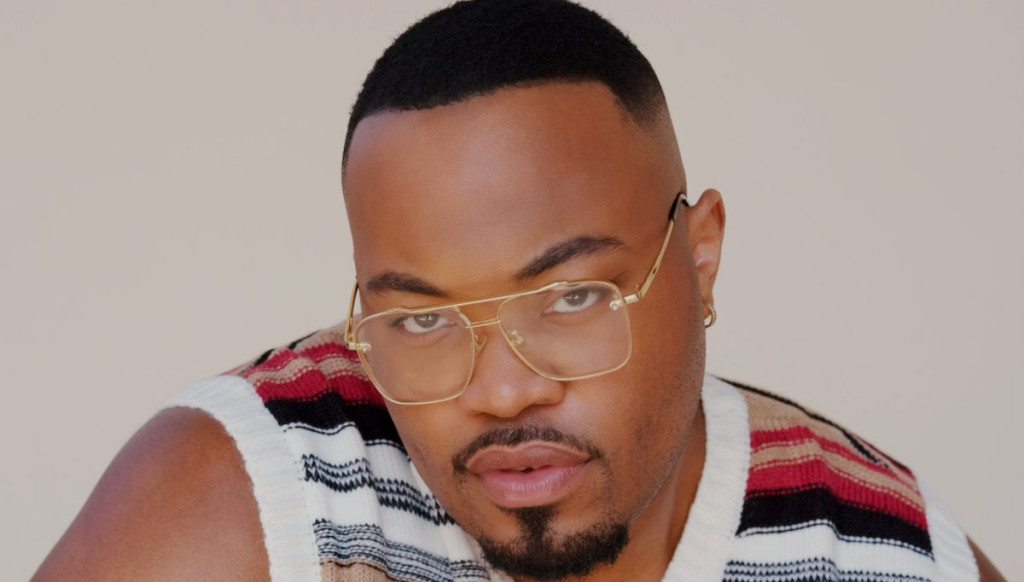This Black Business Month, meet Hippy Potter, a multi-hyphenate illustrator and animator whose work is as vibrant as it is intentional.
From bold murals and digital collaborations to toy design and brand partnerships, Potter has carved out a lane that fuses art, identity, and entrepreneurship. His visuals — unapologetically joyful, rooted in Blackness, and radically expressive of queer identity — remind audiences that representation isn’t just powerful, it’s necessary.
What sets Potter apart is his ability to move seamlessly between grassroots projects and global platforms. He’s partnered with household names like Kellogg’s, Instagram, GIPHY, and LEGO, while also working with brands such as CAVA and Nike to reimagine identity-driven storytelling.

Whether it’s his first toy creation Toasty or national campaigns that reach millions, every project carries the same ethos: uplift the community, expand the narrative, and make art accessible for everyone.
As Potter reflects on his journey, from graduating from the Fashion Institute of Technology (FIT) to becoming a nationally recognized creative force, his mission is clear: build a career that not only sustains him but also sustains the communities that inspire his work.
Check out our Q&A with Potter below.
You’ve built a career by balancing art, identity, and entrepreneurship. What was the moment you knew you wanted to merge all three?
I realized I wanted to merge art, identity, and entrepreneurship when I saw that my creativity could be more than personal expression; it could be a platform. The moment my work started resonating with people on a deeper level, I knew I wanted to build something bigger than myself
As a graduate of the FIT, how did your education and early experiences shape your creative direction?
FIT taught me discipline and gave me the technical foundation to dream fearlessly. In the midst of being a bit underrepresented in the student body at the time those differences helped to propel me and that message.
Those early years also showed me that design isn’t just about aesthetics, it’s about storytelling, identity, and creating work that makes people feel seen.
You’ve been featured on Good Morning America, partnered with major brands, and launched your first toy, Toasty. What were the steps to scaling your work from passion projects to nationally recognized collaborations?
Scaling came from trusting my vision, staying consistent, and saying yes to opportunities that felt aligned. Each project, from small commissions to national campaigns, built momentum, and I treated everyone like it mattered, because it did.
Your work is honest and intentional about highlighting Blackness, queer identity, and self-expression. How have your personal experiences shaped that lens?
My experiences as a Black, queer artist aren’t separate from my art; they’re the heartbeat of it. I create with honesty because I know how powerful it is to see yourself reflected, celebrated, and reimagined in ways the world doesn’t always allow.
Since it’s Black Business Month, what does being a Black business owner mean to you?
Being a Black business owner means rewriting the narrative, building something sustainable that represents joy, creativity, and legacy. It’s proof that our ideas and our voices not only matter but thrive when given space.
As a creative, how do you balance creative freedom with business demands and meeting deadlines?
I balance it by treating both sides with respect for the art and the structure. Deadlines and strategy give me discipline, while creative freedom keeps my work authentic and alive.
What role does community play when developing new ideas and making them last?
Community is everything to me. The support, feedback, and love I receive fuel me, and in return, I aim to create worlds where my community feels seen, valued, and inspired.
Where do you find your visual inspiration, and how do you keep your style evolving?
I find inspiration everywhere, from childhood nostalgia to fashion, music, and my personal experiences. My style evolves because I allow myself to play, take risks, and let my identity shift naturally into the work.
You’ve done work with brands like LEGO, CAVA, and Nike. What do you look for in a brand or a partnership to make sure it aligns with your values?
I look for brands that want to collaborate, not just consume. If a partnership feels authentic, celebrates creativity, makes space for identity, and tells an authentic story, then it’s a good fit.
What do you think are the biggest challenges Black and queer artists face today?
One of the biggest challenges is being seen as more than a trend or a checkbox. Black and queer artists constantly push culture forward, but we still have to fight for the resources, opportunities, and respect we deserve.
What’s one piece of advice you would give to Black and queer creators about building a career and community?
Lead with authenticity and trust that your voice has power. Build your community with intention, because that network will not only support your art but sustain your journey.
Photo Credit: Yellow Background ( Sarai Garcia) / Tan Background (Laerke McGowan)




